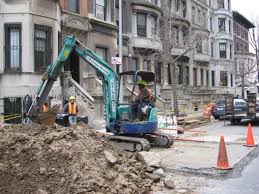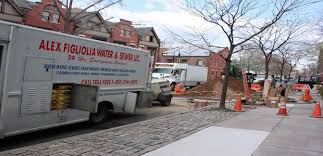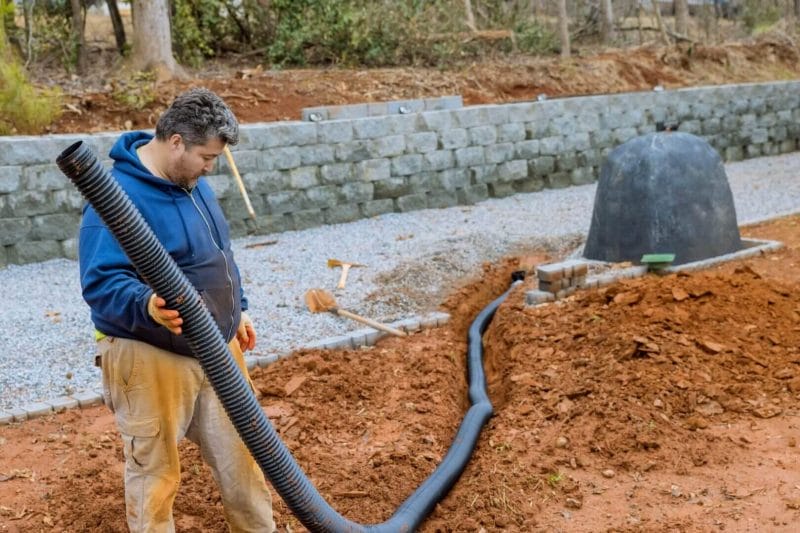When it comes to home maintenance, sewer line issues aren’t just a literal headache — they’re a situation that requires quick and efficient resolution. This comprehensive guide is aimed at all homeowners and real estate investors who either have a sewer line issue that needs fixing or are proactively educating themselves on the topic.


Understanding the Scope of the Issue
Sewer line problems are a nightmare for any homeowner. Common issues include blockages, leaking joints, and, at times, complete collapses. How do you recognize that the problem is with your sewer line and not another aspect of your plumbing system?
Identifying the Root of the Problem
Often, the first signs of a failing sewer line are slow drains, gurgling noises from your toilet, or an unexplained sewage smell in or around your home. More severe symptoms could include sewage backups in your home or a noticeable increase in your water bill. Recognizing these warning signs can help you act swiftly before the issue escalates.
DIY Steps to Diagnose
A simple test like performing a dye test on the toilet or running multiple water fixtures at the same time can provide a quick and dirty (literally) confirmation of a sewer line issue. However, more sophisticated tools, such as sewer cameras, are often necessary to identify the exact location and nature of the damage.
—
The Replacement Process
Once you’re certain your sewer line needs replacement, it’s time to dive into the process. This section will guide you through the typical steps involved in replacing a residential sewer line, providing you with a clear understanding of what to expect.
Initial Consultation
The process typically starts with a call to a licensed plumber. An initial inspection will be performed to diagnose the issue and provide you with a quote for the replacement. It’s essential to get multiple estimates to ensure you’re getting a fair price.
Obtaining Permits
Replacing a sewer line requires permits from your local municipality. Your hired professional will handle this part, but it could slightly delay the start of the project, so factor this in when planning the timeline for the replacement.
Preparing Your Home
Before the actual replacement begins, you will need to clear the work area. This means removing any obstacles over the site of the sewer line, both inside and outside your home.
Excavating the Old Line
In most cases, the old sewer line will need to be accessed and removed. This involves extensive digging that could damage landscaping and require heavy machinery, depending on the depth and location of the line.
Installing the New Line
The new sewer line will be installed after the old one is removed. Modern materials like PVC are commonly used due to their durability and cost-effectiveness. The line will be carefully sloped to ensure proper drainage and follow all necessary building codes.
Post-Installation Checks
After the new line is in place, your plumber will perform tests to ensure there are no leaks and that the system functions as it should. They will then backfill the trench, re-landscape (if that’s part of the service), and clean up the work area.
—
The Cost of Replacement
Sewer line replacement can be a significant investment. Understanding the cost breakdown can help you budget for the work and also identify areas where you might be able to save.
Factors Affecting Cost
Several factors can influence the cost of your sewer line replacement, including the depth of the line, the length, and the material you choose for the new line. Other additional factors, like the presence of trees with roots that may cause problems, can also influence the price.
Material Costs
The materials used in the replacement will be one of the most significant costs. While PVC is the most popular material, older homes might have cast-iron or clay lines that are more expensive to replace.
Labor and Equipment Costs
The labor for replacing a sewer line is intensive and specialized. The use of equipment also significantly influences the cost, especially if extensive excavation is required.
Additional Expenses
In addition to the line replacement itself, you may incur costs for landscaping, especially if it needs to be restored after the trench is backfilled.
Financing Options
Given the high cost, some homeowners may explore financing options such as personal loans or home equity lines of credit (HELOCs). Your chosen contractor may offer in-house financing or payment plans as well.
—
Finding the Right Professional
Ultimately, the success of your sewer line replacement will hinge on the quality of the professionals you hire. Here’s how you can ensure you’re working with a reputable and capable team:
Research and Reviews
Do your due diligence by researching the company and reading online reviews. Check their credentials and verify that they have the necessary license and insurance.
Comparison Shopping
Don’t rush the process. Take the time to get multiple quotes and compare the services offered. Remember, the lowest bid isn’t necessarily the best deal if the quality of workmanship is lacking.
Experience and Expertise
Find a team that has ample experience in residential sewer line replacements. They should be able to provide you with references and examples of their work.
Communication
During the initial consultation, gauge how well the company communicates with you. Are they responsive to your questions and concerns? A clear line of communication is vital throughout the project.
—
Minimizing Disruption to Your Home Life
A significant home repair like a sewer line replacement can be disruptive to your daily life. Here are a few tips on how to mitigate that:
Schedule Wisely
Coordinate with your contractor to develop a timeline that minimizes the interruption as much as possible. Be flexible with your schedule and understand that delays can happen.
Plan for Access
Ensure that workers have easy and safe access to the worksite. Clear a path to the sewer line, both inside and out, to expedite the process.
Communicate with your Household
Keep everyone in the loop about the project’s schedule and any necessary changes. This can help set realistic expectations and reduce stress.
Utilize Alternative Facilities
If the sewer line replacement will cut off access to your bathroom facilities, consider using a portable toilet as a temporary solution.
—
Long-Term Care of Your Sewer Line
Once your new sewer line is installed, it’s essential to maintain it properly to prevent future issues. Educating yourself on how to care for your sewer line can save you time and money down the line.
Proper Disposal Practices
Be mindful of what you flush down your toilets and drains. Avoid disposing of items that can create blockages such as grease, paper towels, and hazardous chemicals.
Tree Root Management
Tree roots can be one of the most common culprits behind sewer line damage. Regular maintenance and, if necessary, root control measures can keep them in check.
Regular Inspections
Scheduling periodic inspections, especially after heavy rains or other events that could impact the soil, will help you catch potential issues early and address them before they become a major problem.




